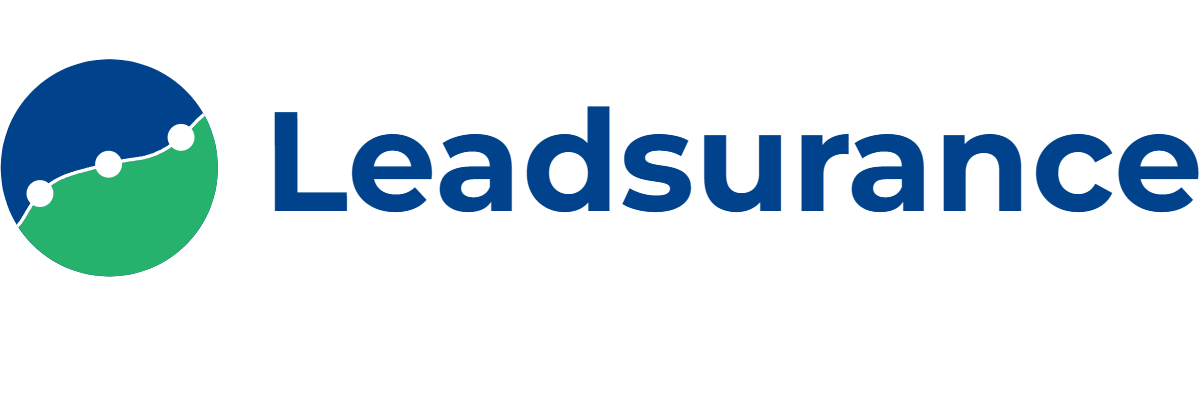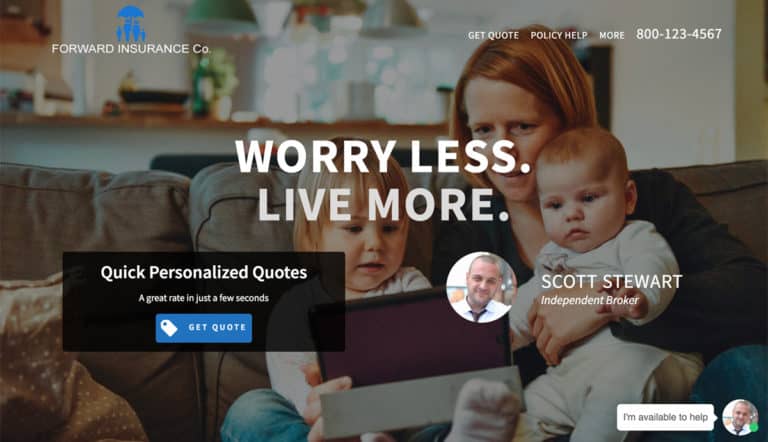Customer service and good products are usually necessary starting factors when selling something. However, understanding that the customer must be able to find the product among thousands of others makes the difference between good and bad sales. This article will provide a glance at how to sell insurance using visibility on the internet as a tool to achieve results and how to take the insurance sales process to the next level.
A Step-by-Step approach to selling insurance online
Nowadays, dealers sell insurance online from home to various clients worldwide, and most of them think that all you need is a good product that customers want to buy. But what if more is required than having something good to offer? More than two-thirds of all customers google a product before making a decision about it, and most of them have no clue about what they need exactly when they search for insurance, for example. So, if an insurance company has the best rates and coverage, customers will never know that unless they find that company on Google Search and the relevant information is right there when they enter the company’s homepage. That is why before thinking about how to retain customers, each company should start with optimizing its website to ensure they get customers.
Website SEO
Keyword research
The SEO of the website starts with a proper analysis of the keywords to cover. Each niche has its unique set up of keywords that reflect the target audience’s search intent. For example, if the insurance company has a website that doesn’t focus on insurance-related keywords – the website won’t go too far, clients will be confused, and search engines will never place it high in search results. If you want to properly understand what keywords are best to cover on the website while considering the search volume and difficulty, it is recommended to use the keyword suggestion tool by SE Ranking. This tool even goes a step further and provides additional suggestions on related, similar, and more specific low search-volume keywords with clearer search intent, saving you time and showing opportunities that you missed or did not think of.
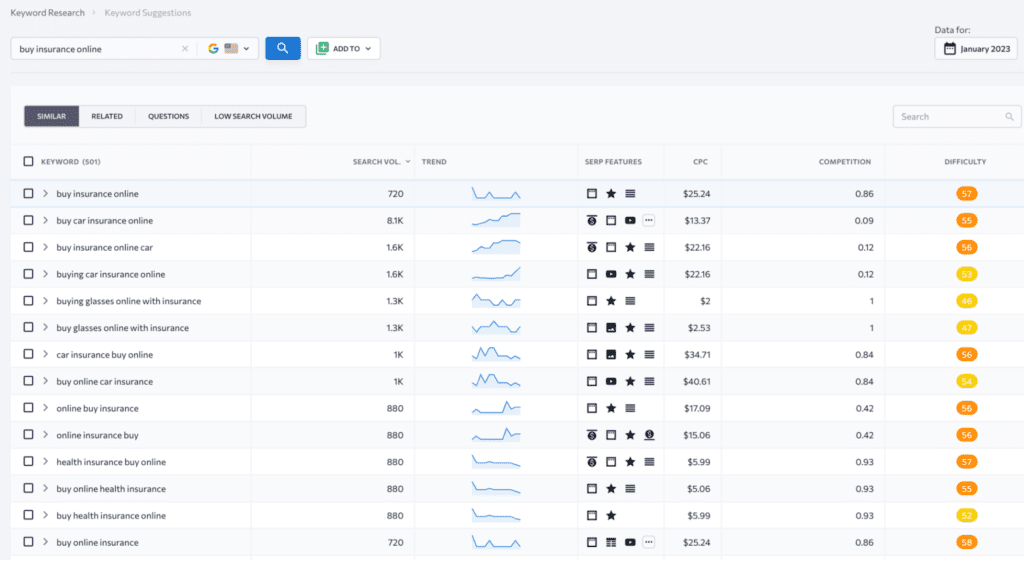
Competitive research
One of the core responsibilities is to check your competitors’ performance. With the help of competitor research, you can check best SEO practices and fill the gaps in your strategy. This allows you to discover what keywords your rivals are ranking for and learn which keywords drive the most traffic to their websites. For example, you can find companies that you think are the best in the insurance sphere and see how their SEO is doing. After analysis, you can find specific keywords that helped them to reach the top search results positions and cover them yourself.
There are also indirect competitors that might not compete with you on the market but might be your SERP (search engine results pages) competitors. That means, they are ranking for the same keywords as you. You should also check those pages, analyze their content, its length, metatags, design, etc. Additionally, you can check how much competitors pay for ads for specific keywords for insurance that might be interesting to your business.
User-Friendly Website Structure
Another important thing in SEO is to create an easy-to-navigate website, as user experience also impacts your rankings. The website should be designed in a way that makes it clear for the customer within their first seconds of interaction with it. The website should have internal links to the most informative articles that could convince the reader to buy the product. Specific buttons for the payment page, blog, and pages like “About the Company” should be easily available at the top of any page.
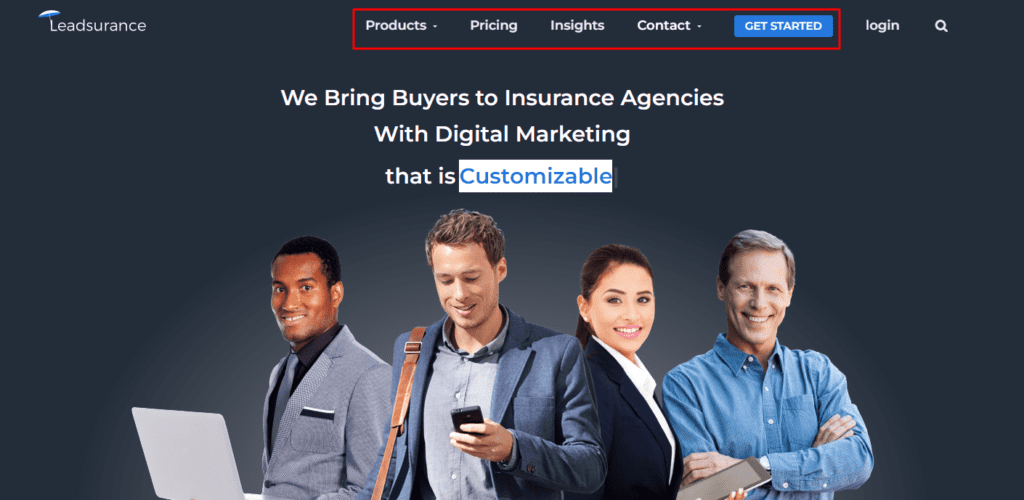
Additionally, the design of the pages has to be user-friendly to generate leads. Each page should have the following links in the header or footer:
- Information about the company and its services;
- Specific credentials on how to contact the company in case of need;
- Easy-to-access links to the “about us”, “terms and conditions”, and “guarantees” pages in the footer and header of the page, where the customer can read relevant information concerning cooperation with the company;
- Internal links to other useful pages from the company’s website (for example, a link to a blog) that might help to explain the topic of the page or provide helpful information to understand some terms or services better;
- Optional choices include links to pages with clients’ feedback, blog articles, and more, as these options might increase the user experience.
Technical Performance
None of us want to click on the website and wait for ages before it opens, or start to navigate the website and find bugs or see its crash notification. If your webpage cannot load in 2-3 seconds, you can face problems ranking high in the search results, as page speed is considered a ranking factor. Additionally, if your website is not optimized for mobile users, you might lose 2/3 of all users who use phones to search. That is why each company should work on its website to constantly improve and optimize the client’s experience.
Content
The next step in developing the platform for effective insurance sales is filling the website with compelling content. Such content has to cover the keywords found during the research and provide simple answers to clients’ questions about insurance or other related features. Each content article must be original and provide valuable insights into your sphere. It does not have to always be about insurance, but it has to be connected to the topic in some way and mention your service where applicable. Additionally, your content has to be up-to-date, so you should regularly post new articles, and edit outdated information in your previous articles since Google tracks changes and will push the positions of the article if it is constantly updated. Adding informative visuals, videos, and statistics will make it seem more compelling to clients, and the message you are trying to convey might stick with the user for a long time. This might also make your website more appealing to the audience and impact Google’s decision to keep it higher on the search results list.
Customer Service Enhanced with Chatbots
Customers consume information on websites differently due to various reasons. However, your website should focus on getting leads to increase sales at whatever cost. It was found cost-efficient to use chat and chatbots to generate leads and convince customers who feel lost. Many clients do not understand what they are looking for, as most of them lack the expert knowledge they need to purchase insurance. That is why a chatbot might provide simple answers to FAQs and usually has a way to contact a real person if the client still needs help.
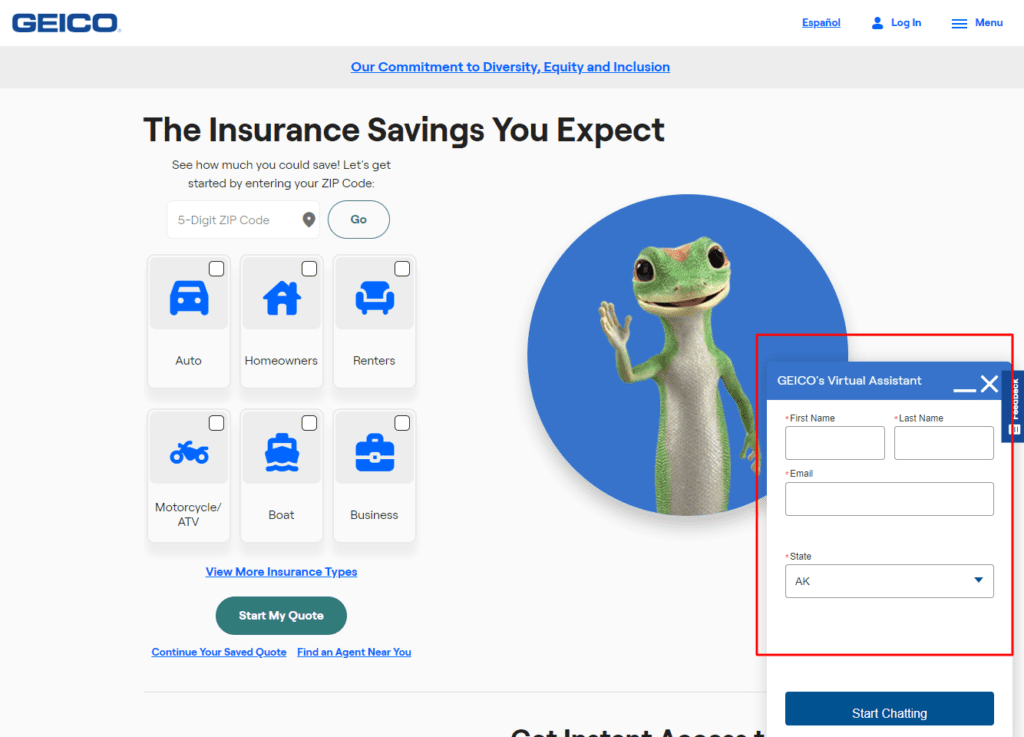
Social Media
Insurance companies might consider using social media to increase their online presence. Social media marketing can help insurance companies increase brand awareness, strengthen relationships with their clients, and engage referral traffic to their websites. Such platforms as Facebook, Linkedin, Instagram, or Twitter could be great places to build an online community around your business, engage your potential clients with exciting content, and communicate with them via comments or direct messages.
You can also use your website to your advantage by placing links to it in the posts or bio, and vice versa, embed links to your social media in the footer of your website. Another benefit of social media marketing is the opportunity to run paid ad campaigns and track results with various analytical tools.
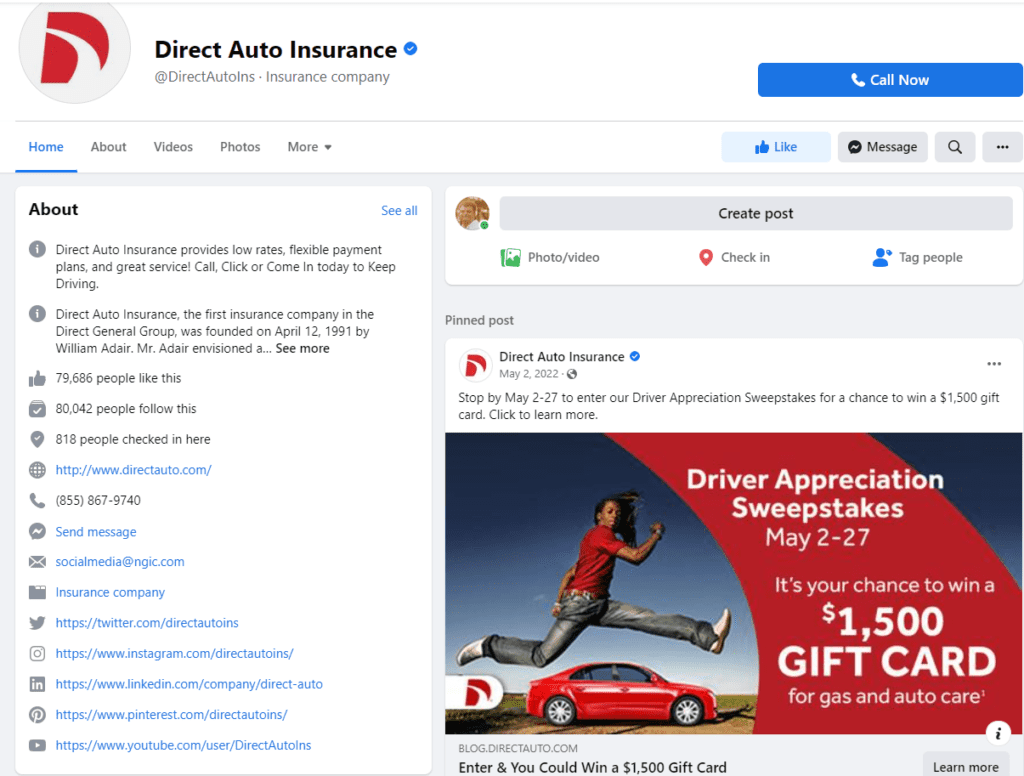
Customer Feedback
Customer feedback is a form of social proof that makes customers more confident when deciding on a purchase. It can be placed on your website or a third-party review website.
In such a way, you show your potential clients that other people trust you and have success stories thanks to your services.
Customer feedback can be presented in different ways: testimonials, reviews, trust icons by other authoritative organizations, and even case study articles in your blog. You can also add information about how many people have already chosen your services, how many years your business has been working, and other real facts and numbers that will convince the customer that you’re reliable.
These tactics can help you to cope with bad reviews from your competitors, who have chosen bad fake reviews as a marketing tactic. Some competitors might use a marketing strategy that shows every other insurance company as bad, including yours. You must ensure that your website has good reviews before the customer gets scared by all the other companies that do business by lowballing others.
Hence, thinking about how to increase a customer’s feedback score to 5/5 stars is a complex issue, but at least try to reply to those who provide bad feedback to show that you care about those who use your service.
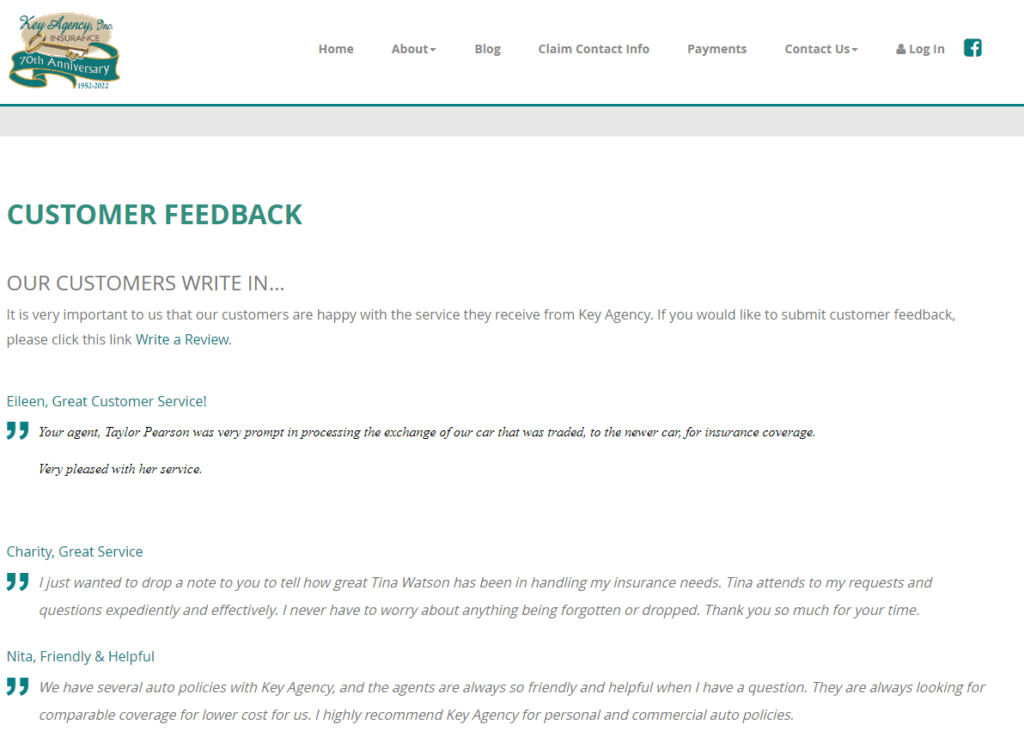
Paid Ads
With the company’s budget in mind, there is a shortcut available: buy google ads for the keywords of your choice. It is a costly choice, but it can push the website up in organic results, and people will be more likely to see your website among others who did not pay for ads. Although paid ads are a short-term strategy, they can result in high conversion rates. Finding the keywords that you think show the customer intent that you cover and placing an ads campaign for those keywords could generate countless leads. To achieve that, the company must find relevant keywords that target customers’ needs and provide a relevant webpage that covers their interests.
You can create a separate landing page to promote while running paid ads campaigns. These landing pages should have all the needed information to convince a client to buy insurance, clear call-to-actions, and convenient forms to fill out. Hence, $100 of insurance sales for every $1 spent on ads might be a dream to all of us, but a good market campaign could generate more than you spend in the long run.
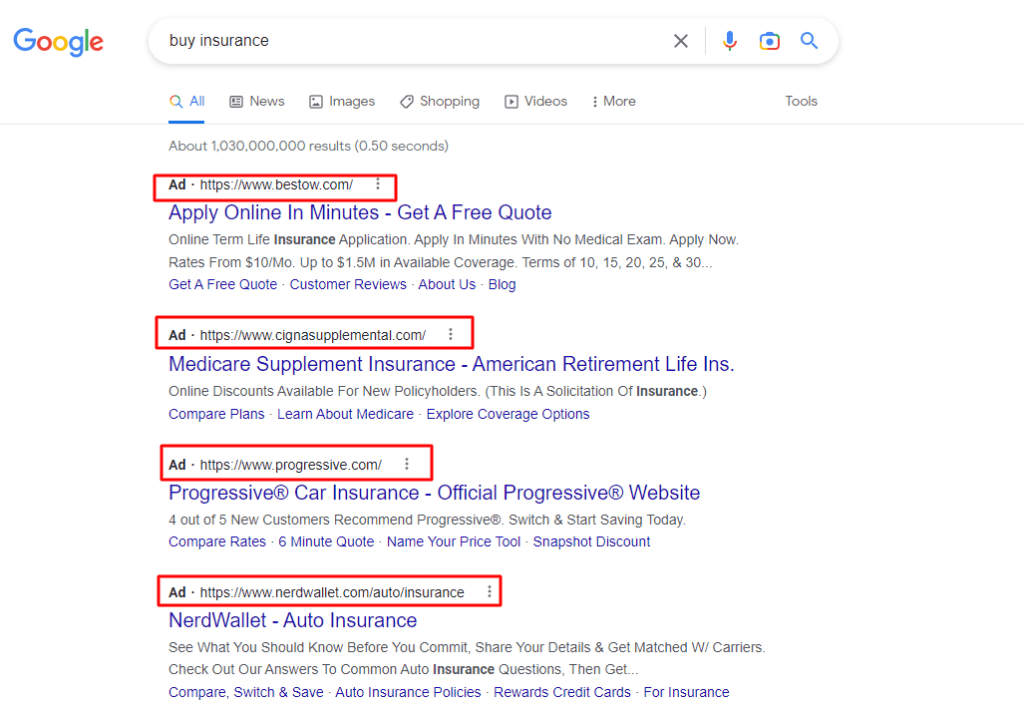
Brand Loyalty
What differentiates a website from being good and legendary is its ability to connect with clients and build a community around its brand. Besides providing excellent service and insurance product, your website should serve as a portal for your thoughts and ideas that not just explain the company’s vision but also helps clients. Real-life stories and expert tips might be as beneficial for the client as for you by building customer loyalty to your brand. Hence, meetings, seminars, expert tours, and other events to educate customers are meant not only to increase insurance sales but are also a part of corporate social responsibility.
Summary
To sum up, the best way to sell insurance is not just about sales. The client must be able to find you via the internet, and the website should appeal to users with various designs and features. To ensure clients can find the website, it is critical to work on its SEO. However, it’s also essential to engage with customers, work on their feedback, communicate with the community, and build trust. Some opportunities, such as paid ads, may provide a shortcut to sales, but it is critical first to understand SEO. Paying attention to all the little details, even technical ones like loading speed, makes the difference between zero sales and a profitable insurance company.
